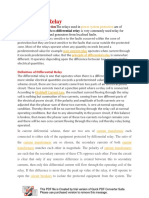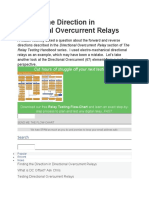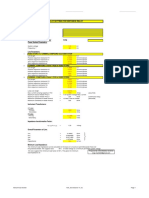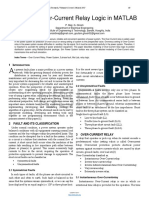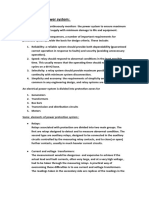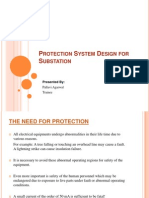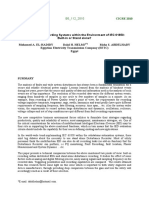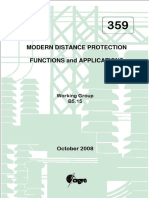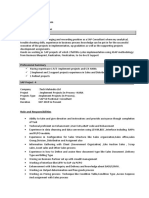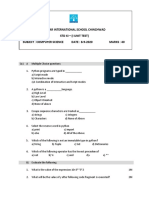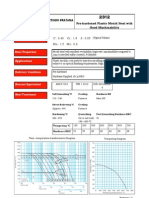100% found this document useful (1 vote)
332 views25 pagesPower Equipment Protection Guide
Protection of power equipment aims to prevent hazards like fires or explosions from overloads, short circuits, and earth faults. Relay protection systems continuously monitor the power system state using current and voltage transformers and detect abnormal situations. Relays are set to operate after a time delay to limit disturbances and maintain selectivity. Protection zones are formed by relays and circuit breakers to isolate faults and maintain redundancy. Relay types include overcurrent, differential, directional, and impedance relays. Transformer, generator, line, and motor protection systems use various relay schemes tailored to the equipment for safety and reliability.
Uploaded by
kponramCopyright
© © All Rights Reserved
We take content rights seriously. If you suspect this is your content, claim it here.
Available Formats
Download as PDF, TXT or read online on Scribd
100% found this document useful (1 vote)
332 views25 pagesPower Equipment Protection Guide
Protection of power equipment aims to prevent hazards like fires or explosions from overloads, short circuits, and earth faults. Relay protection systems continuously monitor the power system state using current and voltage transformers and detect abnormal situations. Relays are set to operate after a time delay to limit disturbances and maintain selectivity. Protection zones are formed by relays and circuit breakers to isolate faults and maintain redundancy. Relay types include overcurrent, differential, directional, and impedance relays. Transformer, generator, line, and motor protection systems use various relay schemes tailored to the equipment for safety and reliability.
Uploaded by
kponramCopyright
© © All Rights Reserved
We take content rights seriously. If you suspect this is your content, claim it here.
Available Formats
Download as PDF, TXT or read online on Scribd
/ 25















